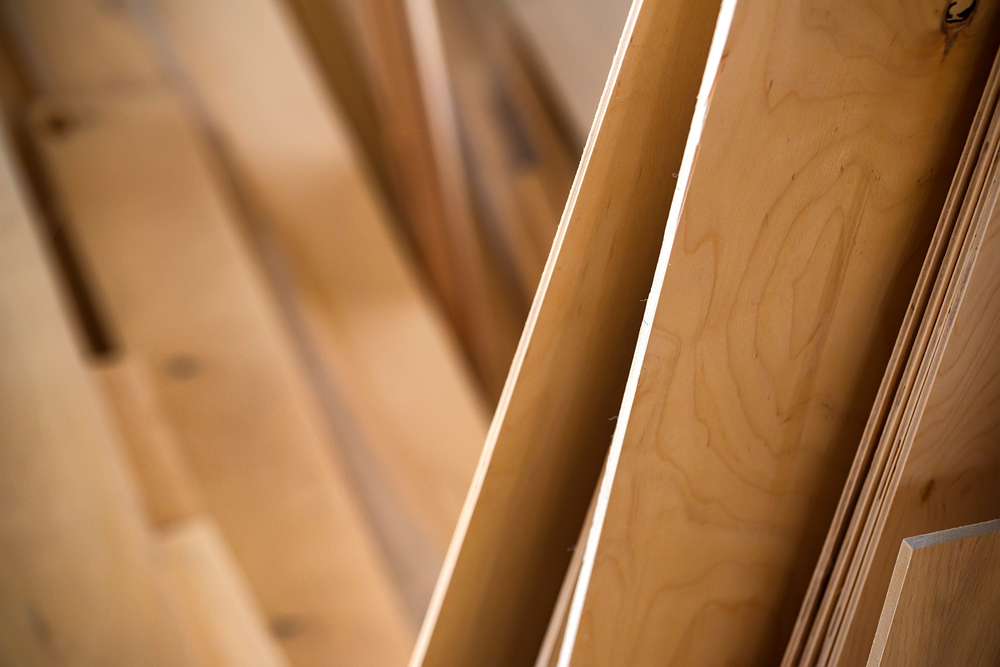Architectural Millwork Companies
Architectural Millwork Companies: Crafting Heritage and Modernity
Architectural millwork companies bridge the gap between historical craftsmanship and contemporary design. These companies specialize in creating intricate woodwork elements that are both functional and decorative.
Understanding Millwork
Millwork refers to any woodmill-produced building materials that are used in construction. This includes moldings, doors, window casings, and cabinets. Unlike traditional carpentry, millwork is more about fine details and intricate design. It’s a blend of artistry and precision.
Key Roles of Millwork Companies
- Designing custom woodwork elements
- Manufacturing detailed pieces using advanced machinery
- Installing finished products in residential and commercial buildings
These companies often collaborate closely with architects, interior designers, and builders. They ensure that the design intent is accurately translated into the final product.
Materials Used in Millwork
Millwork companies use a variety of materials depending on the project requirements. The choice of material affects the durability, appearance, and cost of the final product.
- Hardwoods: Maple, oak, and cherry for high-end finishes.
- Softwoods: Pine and fir for cost-effective solutions.
- Engineered wood: MDF and plywood for stability and versatility.
- Veneers: Thin slices of wood applied to furniture for an attractive finish.
Technology in Millwork
Modern millwork companies leverage advanced technology to achieve precision and efficiency. Computer Numerical Control (CNC) machines are common in most workshops. These machines allow for precise cutting and shaping of wood.
3D modeling software helps in visualizing the final product before manufacturing begins. This reduces errors and ensures client satisfaction.
Types of Millwork Services
Custom Millwork: Tailored to fit unique requirements. This may include bespoke cabinetry, staircases, and intricate moldings.
Restoration Millwork: Focuses on restoring historical buildings. It requires matching old designs and techniques to preserve heritage.
Commercial Millwork: Widely used in office buildings, hotels, and retail spaces. It includes fixtures, furnishings, and paneling that align with the business’s brand image.
Notable Projects and Examples
Many millwork companies boast a portfolio of notable projects. Some of these may include restoration of historic landmarks, such as old theaters or government buildings. Others might showcase modern skyscrapers with custom interiors designed to impress.
For example, a famous millwork company may have worked on the renovation of a historic library. They would match original wood elements, ensuring the new pieces blend seamlessly with the old. Another project could be a luxury hotel that features custom wooden fixtures in the lobby, designed to create an ambiance of elegance and warmth.
Environmental Considerations
Environmental sustainability is increasingly important in the millwork industry. Many companies source wood from sustainable forests to reduce their ecological footprint. Certifications like FSC (Forest Stewardship Council) provide assurance that the wood comes from responsibly managed forests.
Additionally, some companies have adopted practices like recycling wood waste and using low-VOC (volatile organic compounds) finishes. These steps contribute to healthier indoor environments and lesser environmental impact.
Choosing an Architectural Millwork Company
Selecting the right millwork company is crucial for the success of a project. Here are some considerations:
- Experience: Look for a company with a strong portfolio in your type of project, whether it’s residential, commercial, or restoration.
- Reputation: Check reviews and ask for references to understand the company’s reliability and quality of work.
- Capabilities: Ensure they have the necessary technology and skilled craftsmen for the job.
- Environmental commitment: Prefer companies that prioritize sustainable practices.
Future Trends in Millwork
One trend is the integration of smart technology in millwork. Cabinets with built-in charging stations or touchless drawers are becoming popular. Another trend is the use of mixed materials. Combining wood with metals or glass creates modern and unique designs.
There’s also a growing demand for personalized millwork. Clients want pieces that reflect their style and preferences. This trend is likely to continue as customization becomes more accessible through advanced manufacturing techniques.
The Craftsmanship Behind Millwork
Talent and skill are at the heart of millwork. Craftsmen spend years honing their skills to carve, shape, and finish wood to perfection. This expertise ensures that each piece is not only functional but also a work of art.
The process starts with understanding the design requirements. Craftsmen then select the appropriate wood, considering its grain, color, and strength. Each piece is carefully cut, shaped, and assembled before being sanded and finished. This meticulous attention to detail ensures high-quality results.
Millwork in Modern Architecture
Millwork plays a vital role in modern architecture. It adds warmth and character to spaces that might otherwise be cold or impersonal. Elements like wooden wall paneling, custom doors, and window casings can transform a building’s interior.
In commercial spaces, millwork helps create a branded environment. For instance, a retail store might use custom shelving and display units that reflect its brand aesthetics. In office buildings, millwork can create functional yet stylish workspaces.
Challenges in the Millwork Industry
The industry faces several challenges, such as fluctuating material costs and a shortage of skilled labor. The high cost of quality wood makes projects expensive, while finding skilled craftsmen is increasingly difficult.
Innovations in technology can help mitigate these challenges. CNC machines, for example, reduce labor costs and increase precision. Investing in training programs can also help develop a new generation of skilled craftsmen.
Benefits of High-Quality Millwork
Investing in high-quality millwork offers several benefits. It enhances the aesthetic appeal of a building, adds value, and improves functionality. Custom millwork can cater to specific needs, whether it’s additional storage or a unique design element.
High-quality millwork also ensures durability. Well-crafted wooden elements can last for decades, making them a worthwhile investment.
Case Studies
Consider a luxury home that required custom cabinetry and moldings. The millwork company designed, manufactured, and installed these elements, transforming the house into a high-end residence.
Another example is a historic theater undergoing restoration. The millwork company replicated old woodwork designs to match the original aesthetics while meeting modern safety standards.
Collaborative Process
The success of a millwork project depends on collaboration. Architects, designers, and builders must work closely with the millwork company to ensure a cohesive final product. Clear communication and detailed planning are crucial.
Regular site visits and meetings help keep the project on track. Any changes or issues can be addressed promptly, ensuring that the final product meets expectations.
Innovative Design Solutions
Many companies are known for their innovative design solutions. For example, incorporating hidden storage in a piece of furniture. This not only maximizes space but also adds a unique element to the design.
Another innovation could be using reclaimed wood. This gives new life to old materials and adds a sense of history to the project.
The Importance of Detailing
Attention to detail sets high-quality millwork apart. From the profile of a molding to the finish on a cabinet, every detail matters. This level of care ensures that the final product is both beautiful and functional.
Detailing also includes practical considerations. For instance, selecting the right type of wood for different parts of a project. Each wood species has unique characteristics that affect its suitability for various applications.
Customization in Millwork
Many clients seek personalized solutions. Custom millwork allows for unique designs that reflect individual tastes. This could range from a one-of-a-kind staircase to custom kitchen cabinetry.
Customization offers endless possibilities. Clients can choose from different wood species, finishes, and designs. This flexibility ensures that the final product meets their specific needs and preferences.
Training and Skill Development
Building a skilled workforce is essential. Many companies invest in training programs to develop talent. Apprenticeships are common, allowing new craftsmen to learn from experienced mentors.
Continuous learning is also important. Staying updated with the latest techniques and materials ensures the highest standards of craftsmanship.
The Role of Millwork in Interior Design
Interior designers often rely on millwork to bring their visions to life. Custom wood elements can define a space, adding both aesthetic and practical value.
For example, built-in shelving units can provide storage while becoming a focal point in a room. Similarly, custom trim and moldings can enhance the architectural style of a space.
The Business Side of Millwork
Running a millwork business involves more than just craftsmanship. It requires careful planning, efficient operations, and effective marketing. Companies must manage projects, handle finances, and build client relationships.
Good business practices ensure sustainability and growth. This allows companies to continue delivering high-quality products and services.
Client Relationships
Building strong client relationships is key to success. Happy clients are likely to return and recommend the company to others. Clear communication and meeting expectations are crucial.
Providing excellent customer service builds trust. This is especially important in custom projects where client satisfaction is the ultimate goal.
Millwork in Public Spaces
In public spaces, millwork can create inviting and functional environments. Libraries, museums, and airports often feature custom woodwork elements.
These elements add a touch of warmth and sophistication. They also serve practical purposes, such as providing seating or display areas.
The Future of Millwork
The industry continues to evolve. Factors like sustainability, technology, and customization drive this evolution. Companies that adapt to these trends are likely to thrive.
The future of millwork looks promising. With a blend of tradition and innovation, millwork companies will continue to play a vital role in architecture and design.






